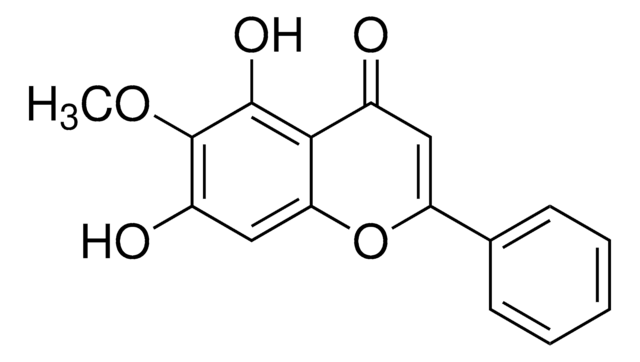95082
Chrysin
analytical standard
Synonym(s):
5,7-Dihydroxyflavone
About This Item
Recommended Products
grade
analytical standard
Quality Level
Assay
≥98% (HPLC)
shelf life
limited shelf life, expiry date on the label
technique(s)
HPLC: suitable
gas chromatography (GC): suitable
mp
284-286 °C (lit.)
application(s)
food and beverages
format
neat
storage temp.
2-8°C
SMILES string
Oc1cc(O)c2C(=O)C=C(Oc2c1)c3ccccc3
InChI
1S/C15H10O4/c16-10-6-11(17)15-12(18)8-13(19-14(15)7-10)9-4-2-1-3-5-9/h1-8,16-17H
InChI key
RTIXKCRFFJGDFG-UHFFFAOYSA-N
Looking for similar products? Visit Product Comparison Guide
Related Categories
General description
Application
Packaging
Storage Class Code
11 - Combustible Solids
WGK
WGK 3
Flash Point(F)
Not applicable
Flash Point(C)
Not applicable
Choose from one of the most recent versions:
Already Own This Product?
Find documentation for the products that you have recently purchased in the Document Library.
Customers Also Viewed
Protocols
Qualitative Thin Layer Chromatography Analysis of Flavonoids and Quantification of Terpene Lactones in Ginkgo Biloba Extracts and Tablets
HPTLC fingerprinting enables rapid identification of passion flower with related reference materials.
Our team of scientists has experience in all areas of research including Life Science, Material Science, Chemical Synthesis, Chromatography, Analytical and many others.
Contact Technical Service









